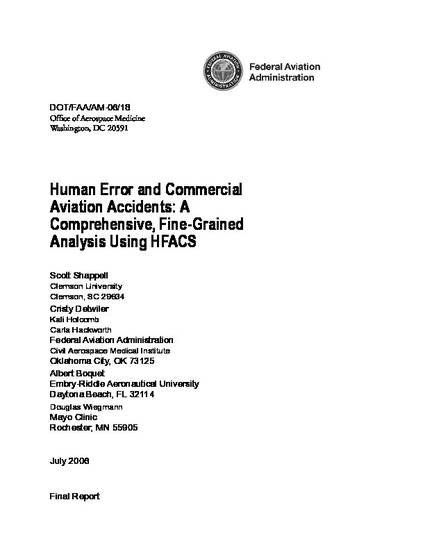
The Human Factors Analysis and Classification System (HFACS) is a theoretically based tool for investigating and analyzing human error associated with accidents and incidents. Previous research has shown that HFACS can be reliably used to identify general trends in the human factors associated with military and general aviation accidents. The aim of this study was to extend previous examinations of aviation accidents to include specific aircrew, environmental, supervisory, and organizational factors associated with 14 CFR Part 121 (Air Carrier) and 14 CFR Part 135 (Commuter) accidents using HFACS. The majority of causal factors were attributed to the aircrew and the environment, with decidedly fewer associated with supervisory and organizational causes. Comparisons were made between HFACS categories and traditional situational variables such as weather, lighting, and geographic region. Recommendations were made based on the HFACS findings presented.
Available at: http://works.bepress.com/scott-shappell/98/

Dr. Shappell was not affiliated with Embry-Riddle Aeronautical University at the time this report was published.